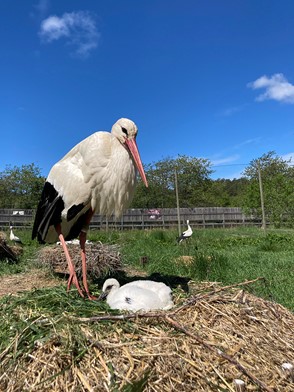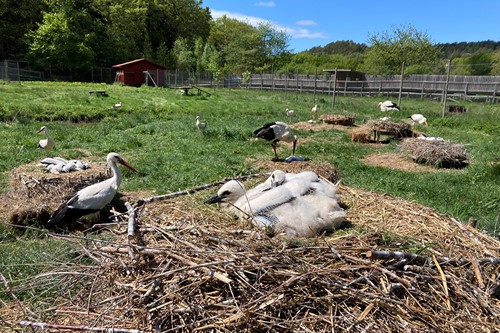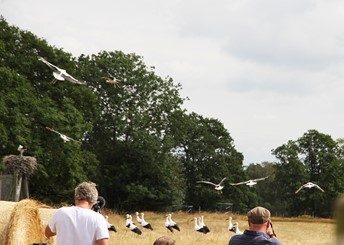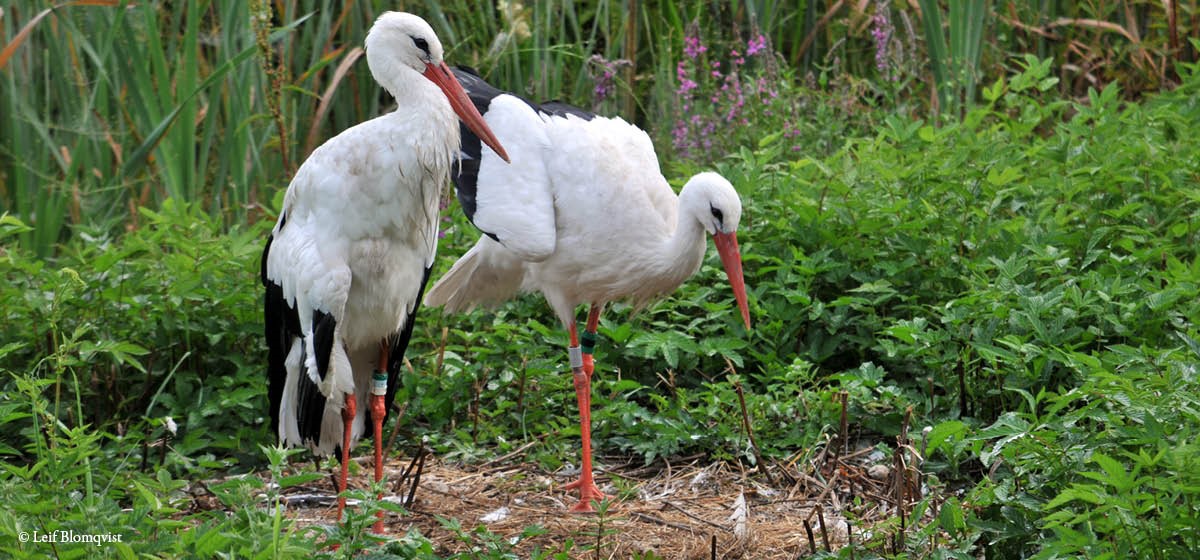White stork conservation
The white stork, Ciconia ciconia, is a popular bird around Europe and the species was for a long time something of a symbol of the southern Swedish agricultural landscape. After a sharp decline in population in the early 20th century, the white stork died out in Sweden in the 1950s.
The extinction was a result of extensive excavations of wetlands made during the 19th and early 20th century to create arable land. In Skåne, 90% of the wetlands that existed at the beginning of the 19th century have been drained out and since this is where the stork found its food, it quickly died out.
The loss of wetlands across Europe is the main cause of the decline of the species throughout Western Europe. A new major threat to the species in the wild is high-voltage lines as these are the most common cause of death both at breeding sites and along the migration routes.

What we do at Nordens Ark
Nordens Ark has been collaborating with the Swedish Stork Project for several years to build up a wild stork population in Sweden. Nordens Ark holds about 12–15 pairs of storks in the wildlife park's wetland area. All the chicks hatched at Nordens Ark are sent down to Scania every summer to be released into the wild together with hundreds of other storks.
Before the storks are released, they are ringed, which is a prerequisite for being able to identify each individual at a later time. A number of storks have also been fitted with GPS transmitters. Thanks to these transmitters, we can follow the migration routes of the storks and thereby gain more knowledge of where and how they migrate. Nordens Ark also participates in the annual inventory of nesting storks in the wild, where all wild yearlings are counted and ringed.

News from the project - March 2024
During 2023, 20 storks from Nordens Ark could be sent down to Skåne for the annual stork release at Hemmestorp's mill in Skåne. A total of 41 storks were released, of which 4 were fitted with GPS transmitters. This year's breeding season in the wild resulted in 55 breeding pairs and a total of 80 fledglings. That is slightly less than last year's record result with 61 breeding pairs and 104 chicks.
The white storks have started to return to their breeding grounds in Skåne and will soon join the 80 wintering storks. At Nordens Ark, our breeding pairs have started gathering sticks to build nests.
At the stork release in 2023, four storks were equipped with GPS, but unfortunately only one of them has survived. The first two died shortly after release and the third collided with a power line in Spain, which is one of the leading causes of death for storks today. The remaining GPS stork Ingi stayed at the beginning of 2024 in western Spain and hopefully she will soon lead the flock towards Sweden.

In collaboration with
The Swedish Stork Project



